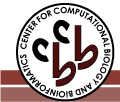| General information | | DisProt: | DP00460_A003 | | Name: | Ectodysplasin-A [Isoform 3] | | Synonym(s): | EDA_HUMAN
Ectodysplasin-A [Isoform A2]
EDA-A2
Ectodermal dysplasia protein
Ectodysplasin-A, membrane form [cleavage product 1]
Ectodysplasin-A, secreted form [cleavage product 2]
| | First appeared in release: | Release 5.4 (10/14/2010) | | UniProt: | Q92838-3 | | UniGene: | | | SwissProt: | EDA_HUMAN | | TrEMBL: | | | NCBI (GI): | | | Source organism: | Homo sapiens (Human) | | Sequence length: | 389 | | Percent disordered: | 1% | | Homologues: | |
| Native sequence |
10 20 30 40 50 60
| | | | | |
MGYPEVERRE LLPAAAPRER GSQGCGCGGA PARAGEGNSC LLFLGFFGLS LALHLLTLCC - 60
YLELRSELRR ERGAESRLGG SGTPGTSGTL SSLGGLDPDS PITSHLGQPS PKQQPLEPGE - 120
AALHSDSQDG HQMALLNFFF PDEKPYSEEE SRRVRRNKRS KSNEGADGPV KNKKKGKKAG - 180
PPGPNGPPGP PGPPGPQGPP GIPGIPGIPG TTVMGPPGPP GPPGPQGPPG LQGPSGAADK - 240
AGTRENQPAV VHLQGQGSAI QVKNDLSGGV LNDWSRITMN PKVFKLHPRS GELEVLVDGT - 300
YFIYSQVYYI NFTDFASYEV VVDEKPFLQC TRSIETGKTN YNTCYTAGVC LLKARQKIAV - 360
KMVHADISIN MSKHTTFFGA IRLGEAPAS
|
| Functional narrative |
Seems to be involved in epithelial-mesenchymal signaling during morphogenesis of ectodermal organs. Isoform 1 binds only to the receptor EDAR, while isoform 3 binds exclusively to the receptor XEDAR. Isoform 3 differs from the canonical form (Isoform 1) in that it is missing aa 307-308. Two cleavage products exist: cleavage product 1 is Ectodysplasin-A, membrane form (aa 1-391) and cleavage product 2 is Ectodysplasin-A, secreted form (aa 160-391). At least eight isoforms are also known to exist. (UniProt)
|
| Map of ordered and disordered regions |


Note: 'Mouse' over a region to see the start and stop residues. Click on a region to see detailed information.
|
| Region 1 | | Type: | Disordered - Extended | | Name: | turn loop C-D | | Location: | 312 - 315 | | Length: | 4 | | Region sequence: |
FTDF | | Modification type: | Fragment
| | PDB: | 1RJ8:A | | Structural/functional type: | Function arises from the disordered state
| | Functional classes: | Modification site
Entropic chain
| | Functional subclasses: | Glycosylation
Flexible linkers/spacers
| Detection methods:
- X-ray crystallography (292 K; pH: 7.5; HEPES (pH 7.5) 0.1 M; NaCl 0.2 M; PEG3350 25 %)
- X-ray crystallography (292 K; di-sodium hydrogen phosphate 0.2 M; PEG3350 20 %)
| References:
- Hymowitz SG, Compaan DM, Yan M, Wallweber HJ, Dixit VM, Starovasnik MA, de Vos AM. "The crystal structures of EDA-A1 and EDA-A2: splice variants with distinct receptor specificity." Structure. 2003; 11(12): 1513-20. PubMed: 14656435
| Comments:Isoform 3 is missing aa E308 and V309 found in Isoform 1. For Isoform 3, at the C-terminal end of {beta}strand C, aa Y308 and Y309 form the receptor specificity switch, followed by a {beta}bulge formed by I310 and N311. An extended loop at aa 312-315 leads to {beta}strand D. This extended loop compensates for the missing residues by being shorter than Isoform 1. Due to the alt splicing, the receptor specificity switch in Isoform 3 has a different nature than Isoform 1 and consequently is specific for a different receptor--XEDAR.
(Hymovitz et al., 2003)
|
| References |
- Hymowitz SG, Compaan DM, Yan M, Wallweber HJ, Dixit VM, Starovasnik MA, de Vos AM. "The crystal structures of EDA-A1 and EDA-A2: splice variants with distinct receptor specificity." Structure. 2003; 11(12): 1513-20. PubMed: 14656435
|
| Comments |
UniProt lists the missing aa for Isoform 3 as V307 and E308. Hymowitz et al (2003) discuss missing aa E308 and V309. In either case, the resulting stretch from 307 to 310 reads, VYYI.
Hymowitz et al (2003) performed their crystallography on the TNF domain fragment of EDA-A1 comprised of aa 233-391, and on the similar fragment for EDA-A2 of aa 233-289. the authors use Isoform 1 aa numbering for both isoforms. The DP records number each sequence individually.
|
| If you have any comments or wish to provide additional references to this protein or its disordered region(s), please click here to e-mail us. |
Disprot-footer
|










